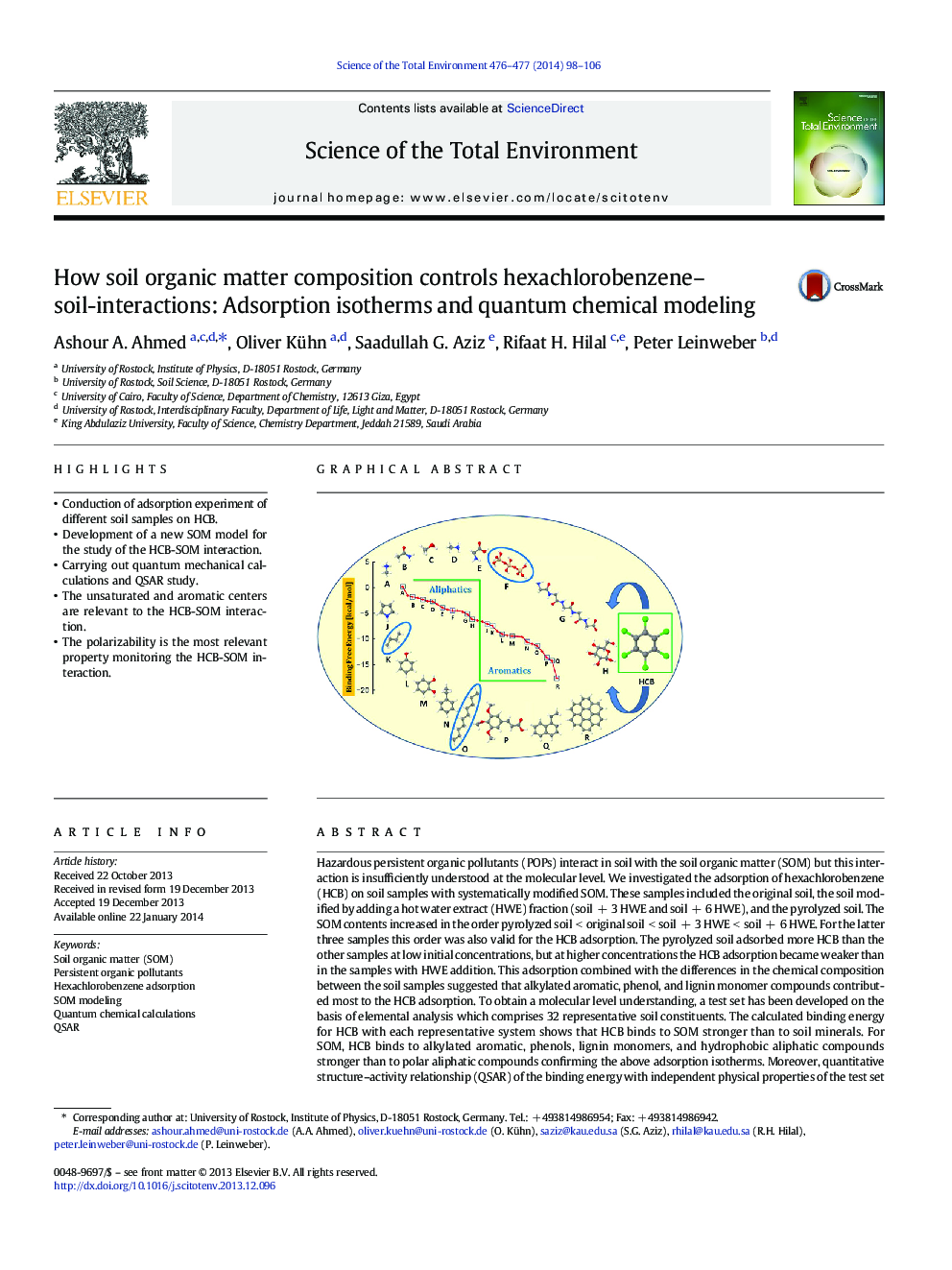| کد مقاله | کد نشریه | سال انتشار | مقاله انگلیسی | نسخه تمام متن |
|---|---|---|---|---|
| 4428526 | 1619789 | 2014 | 9 صفحه PDF | دانلود رایگان |
• Conduction of adsorption experiment of different soil samples on HCB.
• Development of a new SOM model for the study of the HCB-SOM interaction.
• Carrying out quantum mechanical calculations and QSAR study.
• The unsaturated and aromatic centers are relevant to the HCB-SOM interaction.
• The polarizability is the most relevant property monitoring the HCB-SOM interaction.
Hazardous persistent organic pollutants (POPs) interact in soil with the soil organic matter (SOM) but this interaction is insufficiently understood at the molecular level. We investigated the adsorption of hexachlorobenzene (HCB) on soil samples with systematically modified SOM. These samples included the original soil, the soil modified by adding a hot water extract (HWE) fraction (soil + 3 HWE and soil + 6 HWE), and the pyrolyzed soil. The SOM contents increased in the order pyrolyzed soil < original soil < soil + 3 HWE < soil + 6 HWE. For the latter three samples this order was also valid for the HCB adsorption. The pyrolyzed soil adsorbed more HCB than the other samples at low initial concentrations, but at higher concentrations the HCB adsorption became weaker than in the samples with HWE addition. This adsorption combined with the differences in the chemical composition between the soil samples suggested that alkylated aromatic, phenol, and lignin monomer compounds contributed most to the HCB adsorption. To obtain a molecular level understanding, a test set has been developed on the basis of elemental analysis which comprises 32 representative soil constituents. The calculated binding energy for HCB with each representative system shows that HCB binds to SOM stronger than to soil minerals. For SOM, HCB binds to alkylated aromatic, phenols, lignin monomers, and hydrophobic aliphatic compounds stronger than to polar aliphatic compounds confirming the above adsorption isotherms. Moreover, quantitative structure–activity relationship (QSAR) of the binding energy with independent physical properties of the test set systems for the first time indicated that the polarizability, the partial charge on the carbon atoms, and the molar volume are the most important properties controlling HCB–SOM interactions.
Figure optionsDownload as PowerPoint slide
Journal: Science of The Total Environment - Volumes 476–477, 1 April 2014, Pages 98–106
